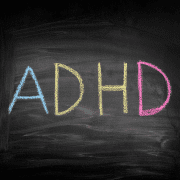I pick up my son most days from school. It’s about a five-minute walk back, which means that he has time to broach approximately 600 subjects. He jumps from topic to topic in the same way that he walks home, which is to say plenty of stops and starts and unexpected zig-zags.
“You know what my two favorite days of the year are, Mommy?” We’d already talked about Legos, his English schoolwork, his teacher’s birthday, and the lack of dessert in his lunch, and we were only halfway home.
“No, what are they?”
“Well, my birthday is one, of course, and then also April 2.”
Why April 2?
“Because it’s World Autism Day! Maybe I should do my presentation next year on April 2, instead of in September.”
This was his annual presentation on autism. It was one of the highlights of his year. And mine. It was an annual reminder of how far we had come.

When my son was 15 months old and not hitting certain developmental milestones, the pediatrician referred us to a structure for children under 3, which had resources for early intervention. When I asked about a diagnosis, I was told not to worry about it, that the important thing was to start the interventions now. We didn’t question what we were told – we were too concerned with getting him any help he needed as quickly possible.
For the next year and half, he would receive both individual and group therapy, designed to help him gain physical and communication skills.
“What about the autism diagnosis?” I asked, during our last month there. “Is that something you can do here?”
“Well, yes…” the psychologist said slowly, “but the issue is that if we give him an official diagnosis, then he’s going to be labelled, and then judged by that label. So people won’t give him a chance, because once they hear the word ‘autistic’, they’ll immediately make assumptions.”
I didn’t push the issue. I’d lived in France for nearly 10 years at that point, but this was my first child. I was unfamiliar with the school system, and completely clueless about how to proceed.
I made an appointment with the director before the school year started, explaining that my son would be entering Petite Section, and that he’d had early intervention for a year and a half. I told her he knew all his letters, could count up to 100, and had memorized most of the Paris Metro map, but had trouble with interactions and communication. I gave her copies of the therapists’ reports and recommendations, and she told me she would give them to his teachers. It would be fine, she said. The teachers knew how to handle these sorts of situations.
It quickly became clear that it was not fine, and that the teachers had no idea how to handle these sorts of situations.
A cafeteria worker told me that my son never ate. A playground worker told me he tried to avoid other kids. The teacher’s aide told me he spent recess time walking in circles around the yard.
I made an appointment with his teachers, and asked if they’d looked at the recommendations from his therapists. They had no idea what I was talking about. The director had never passed on the information I’d given her.
“He should probably only go to school in the mornings,” one of them said. “Maybe just a couple hours per day.”
Cutting my son’s school attendance by 75 percent didn’t seem like a reasonable first step.
“What about support?” I asked. “On our end, we can look into more therapies, and a formal evaluation. What’s the school process when this sort of situation occurs, when it turns out kids need extra help?”
Apparently, permitting the kid come to school only 4 to 8 hours a week was the process.
They also told me that I should send a dossier to the MDPH, the governmental department responsible for aid to people with disabilities. They would decide whether or not to grant my son an AESH, a person who provides one-on-one assistance. This dossier would take apparently 4 to 6 months to process, and mostly likely an AESH wouldn’t be available until the next year.
I scheduled an autism evaluation for my son, and more therapies. He dragged his feet in the morning when I walked him to school. One evening he burst out “School sad.”
I had another meeting with the teachers. One of them told me, “You know, the Education Nationale is going to be very difficult for him,” which at the time seemed like an offensive and premature judgment – he was only three! Now I see it more as a statement of fact. She was right. It was going to be difficult for him. The system is simply not set up for kids who diverge from their norm.
So two months after he’d proudly put his stuffed dog into his new owl-covered backpack and found his name on the student list in his classroom, we withdrew him, and enrolled him in a private school. It was 20 to 25 minutes by metro, instead of 5 minutes on foot. It cost almost as much as our rent.
But it was brand-new, and only had 19 kids. The teachers were kind to him, and encouraging. They asked us for advice, and communicated with us when there were problems. We saw the improvement almost immediately. He ate better; he was more relaxed. He was happy to go to school (“School not sad now!”) He could attend full-time while we sorted out the diagnosis, the MDPH dossier, and the accompaniment arrangement.
Eventually I would learn all sorts of new terms and new acronyms. AESH. AEEH. EES. GEVASCO. I would meet some parents in similar situations, and others in situations that were exponentially more difficult. I would see how schools so often underestimated the capacity of kids with special needs. I would see how they put these kids into a system designed to make success almost impossible, and then they would blame the kids for their failure.
And I would see what a difference it made when you found a school that worked. Public or private, it didn’t matter so much, as long as the people there operated with the assumption that every kid had the same right to be there.
All that was later, though. The diagnosis, the paperwork, the accompaniment. For the moment, it was enough that school was not sad.










Leave a Reply
Want to join the discussion?Feel free to contribute!